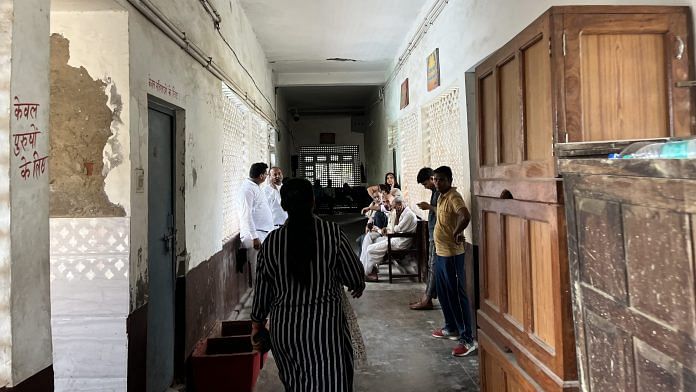With every new Chief Justice, India’s judicial infrastructure returns to the spotlight. It was Justice S.H. Kapadia who in 2010, first tried to have a systematic plan to examine the conditions of existing infrastructure and realise the future needs of district judiciary. Since then, the discussion to improve judicial infrastructure gains focus momentarily when a new Chief Justice assumes office.
We have had Justice T.S. Thakur publicly lament the poor conditions in which magistrates function. Then Justice Ranjan Gogoi successfully streamlined filling up of vacancies in district judiciary. Justice N.V. Ramana initiated a discussion on creation of a national judicial infrastructure authority, which has been rejected. And now we have Justice D.Y. Chandrachud raising the issue of strengthening the district judiciary. In a felicitation ceremony organised by the Supreme Court Bar Association (SCBA), Justice Chandrachud spoke about the dismal state of affairs in the district courts where female judges did not have access to toilets for the entire working day on a regular basis.
The Centre has been attempting to improve infrastructure at the district level in a consistent manner by allocating funds. Since 1993-94, a centrally sponsored scheme (CSS) of the Union government has tried to address the issue of bringing judicial infrastructure up to par. Through the scheme, the Centre has been earmarking funds with contributions from respective state governments in the ratio of 60:40 (90:10 for North-eastern states and union territories), including monitoring progress of initiated projects. Despite the scheme spearheaded by the Ministry of Law and Justice, there hasn’t been any considerable improvement in the physical state of our district courts, leaving successive Chief Justices to lament about the poor state of affairs.
The reason is not hard to discover. Most of the funds allocated under the scheme remain unutilised because states do not come forward with their share, leading to lapse of annual budgetary allocation. Sample this: a total of Rs 981.98 crore were sanctioned in 2019-20. Ultimately, only Rs 84.9 crore came to be spent, leaving 91.36% funds unutilised. In 2020-21, of the sanctioned Rs 594.36 crore, Rajasthan emerged on the top by utilising Rs 41.28 crore but again substantial funds lapsed due to non-utilisation. The CSS ended in 2021 but the central government has extended it for five years, allocating Rs 9,000 crore in the budget with its own share being Rs 5,307 crore. This is a significant increase from past years when the total allocation under the CSS was Rs 8,758.11 crore.
There are essentially two reasons behind the scheme’s tardy progress. First, there is no single ownership of the scheme. Lack of one coordinating agency prevents its successful execution. The CSS, in its current form, visualises a separate state- and central-level monitoring committees. Second, in the central committee, there is no representation of the judiciary as an institution. So, the ultimate consumer of the scheme is absent from the entire process.
Also read: ‘Courts not seen as workplace’ — In Hapur, 13 women judges, 200 lawyers have 1 working toilet
One agency to manage the work
The lack of a single agency prevents from realising both the short-term and long-term objectives. Short-term objectives such as constructing courtrooms for the existing judicial strength as opposed to sanctioned strength, record rooms, computer service rooms, etc. suffer in the absence of a single agency that could measure progress of planned initiatives and nudge the stakeholders into acting. Choosing short-term objectives is also an area of debate as each state may have different requirements but these may be working at cross purposes with the judiciary’s national objectives. For example, 27% courtrooms in India have a computer placed on the judge’s dais for video conferencing facility. How does that fit in the objectives of the Supreme Court e-committee, which is overseeing digitisation of district judiciary? Do these measures qualify as short-term or long-term objectives? Is there duplication of workforce and resources when information and communications technology (ICT) infrastructure is parcelled in as part of setting up judicial infrastructure?
Lack of planning for the future also has its casualties. At present, the central scheme does not plan to cater to future requirements. So, there is no discussion on the foreseeable workload of district judiciary in the coming 10-20 years. Meanwhile, India will become the world’s most populous nation, which would mean a sizeable portion of our aspiring citizens won’t have access to justice, all of which would manifest in different ways in society. A 2016 study found that delay in disposal of cases impacts 0.5% of India’s GDP annually. Long-term planning also suffers as there is no continuity of thought, planning and execution from a single body perspective.
A single permanent body as proposed by Justice Ramana would bring a cohesive approach with ensuring that when states submit action plans for upgrading/establishing judicial infrastructure, they also deposit their share of funds with the authority. While the actual work is carried out in partnership with the states, it will ensure that one agency is responsible for mapping out objectives and achieving them. If India has to achieve its goal of becoming and sustaining a $5 trillion economy by 2026, it can only be done by providing robust and permanent judicial infrastructure, a road which has to be chartered in partnership with the judiciary.
The author is an advocate-on-record, Supreme Court. Views are personal.
(Edited by Prashant)



